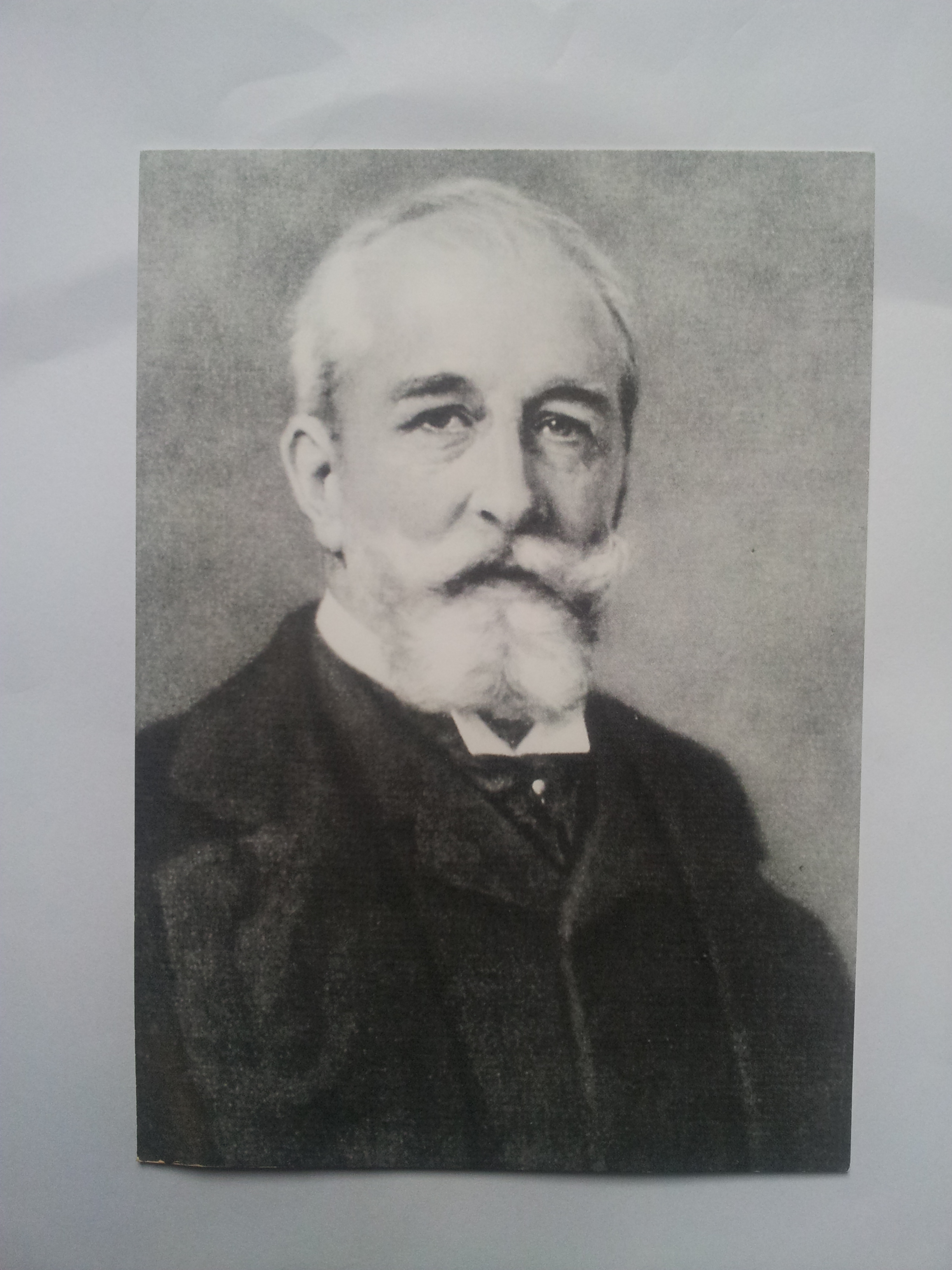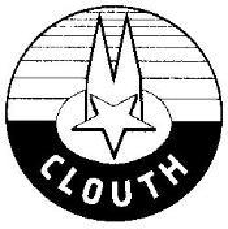





In Memoriam:
Franz Clouth (1838 - 1910)
Venture
Business
Freedom
(of decision and action)
Sucess
______________________________________________________________________________________________________
|
In Memoriam:
Franz Clouth (1838 - 1910)
______________________________________________________________________________________________________ |
|
Old Clouth firm Logo
Altreifen
Balloon Gondola
Cöln Beginning of 20 Century.
Franz Clouth
Bronze F. Clouth Bust
Clouth Book Nr.1
Diving Helmet Clouth
Clouth-Wappen 1923
Clouth Balloon XI
Rechtsanwalt J.P. Clouth
Ehefrau Audrey Clouth
Bryan, Oliver, Phillip Clouth
Max Clouth
Clouth Balloon Sirius
Kautschuk Golfball
Clouth Factory Front
Younger Franz Clouth
Eugen Clouth
Clouth Factory
Air Ship Advert
Clouth Money
Old Clouth Crest
Car tyres
Old Car
OLd Daimler
Excavator with conveyor belt
Clouth VIII Balloon
Wilhelm Clouth
Katharina Clouth
Caoutchouc Golfball
Draft of Clouth Memorial
Old Catholic Church Köln
Cable Tower
Clouth IX
Ticket for Clouth IX Drive
Clouth IX
Clouth Buch 2.Edition
old Franz Clouth
Balloon Gondola
Butzweilerhof Airport
Caoutchouc-Tree
Caoutchouc Sheets
Caoutchouc-Copy Mashine
Water-Regulator
old Land & See Logo
Land & See New logo
Franz Clouth
Richard Clouth
Industrieverein Altlogo
Conveyor Belt Hall
Gate 2 to Clouth Works
Atlantic Cable
von Podbielski Cable
Layer
Sound Silencer "Clouth Ei"(Egg)
Printery Wilhelm Clouth
|
Electrical engineering of the 19th century and its operators
http://www.gracesguide.co.uk/The_Engineer_1964_Jul-Dec:_Index
Steamers in the 19th century and Clouthhttp://www.albert-gieseler.de/dampf_de/tables/ort-ko0.shtml
Clouth works English comparison Armstrong's Elwick Works/North of England You can see how German industry was oriented not only from the product (product) to England, but also from the company building including the residential buildings for the employees in the background of the Elswicks plant (right picture). So one thought of the well-being of the staff and the maintenance of the workforce with a healthy workforce, which today is often ignored under the theme "Wild Capitalism". Because the light bulb and steamer (stevenson) came from this north-English area and "electrician" Franz Clouth and son Max were much in England, one will also be oriented to these English operating conditions as well as the participation in golf and golfball production (See golf!) As well as his registration as an electrician. To prove. http://www.gracesguide.co.uk/The_Engineer_1964_Jul-Dec:_Index
Tire Productions
g Visions in the emerging tire technology for vehicles had already been already at that time (top: new proposals of the tire industry 2017) Franz Clouth lived in the new age, when more and more horses than the actual means of transport, including the goods you were looking for, were in the background, especially since the hard wooden bikes with iron rests on hard cobblestone plaster were not only uncomfortable, but also harmful to transport goods impact. From a military point of view, it was also important to get means of transport for large-scale deployments that could quickly and effectively transport military equipment and weapons. For the entrepreneur, the car became more and more interesting in the form of the truck, in order to be able to transport its produced goods economically in quantities. The hard wooden bicycles were used for the first time in solid rubber tires, and later in air-filled (pneumatic) car tire covers such as inner tubes and bicycle tires. Clouth also presented in the First World War in collaboration with Carl Leverkus / Carl Duisberg / I.G. (Later Bayer-Leverkusen) produced hoses for artificial rubber tires, which had an average service life of 6,000-8,000 km. This was a performance for the time. The carcass of the pneumatic tires consisted first of a fabric, which was then rubberized; The previous hard rubber tires were made of pure rubber material. At the time, inner tubes (inner tubes) have already been manufactured for use in wheel carcasses of transport means. The reason why Franz Clouth has not entered into the tire business as a major mainstay is not disclosed. Ultimately, however, he and his later successor Max Clouth must have convinced the risky beginnings of liability and the then still frequent tire problems to leave their fingers behind. In retrospect, probably a mistake. In the case of further tire production, however, it would have been urgently necessary to go to a considerable extent in a further extensive machine park in addition to specialist personnel and to order expensive winding machines in order to manufacture the carcass fabric. In addition, lack of space in the area of the company can also have been a reason.
Award for the production of pneumatic tires for bicycles and cars 1899 in Munich
Vehicles with solid rubber tires
With pneumatic tires
Daimler Different Tire Types
Pneumatic Tires
Tire carcass with metal profile amplifiers
plate Car dealer and repair shop of the old time
Packaging of new tires
White wall tires have already been available from the first production years Horex-Motor Bike Peter Clouth (1947)
The products were also on the right track, such as awards and awards. Why the tire technology was not one of the main fields of the Clouth productions, is not known, because not proven. At the latest, Franz and Max Clouth should have been awake with the recognizable disappearance of the military's interest in balloons and zeppelins due to the evolving aircraft technology and, above all, in connection with the air show 1910 in Cologne. Franz died in 1910. The development was already in a critical time zone, the first world war, the further explosive technology development after Tesla may also irritate the business view. The Clouth brothers were also recognizable in Cöln (later Cologne) with mature vehicles
Eugen Clouth with son Peter and pneumatic tyres (see tire valves)
Eugen's Son Peter still in german language, will be ranslated asap!: Ist die Verwendung von Gummi/Kautschuk zukunftslos? No Use of rubber in the future possible? Auch auf dem KfZ Sektor ändert sich viel, Kautschuk bleibt gleichwohl der Klassiker / Rubber will stay to be a classic material
Eugen's Son "Peterchen", father of Jürgen grown up in London/England for more than 10 years with his Auntie and her twin sons Peter & John The very nice boys of the past!?
Previously, John, who was a language development supporter at Krupps for her youngest son in Essen, repeatedly on vacation. The families had close connex among themselves. He also produced the handwritten report about his time, which shows that Krupps at that time also seem to have been car-mad. Report kindly given by Gillian Gibbon, his daughter. Alfred Krupp from Essen was as important for Germany as Lord Armstrong for England.
Cable production
Franz Clouth had recognized the importance of cable production and cable laying within the framework of the economic confrontation with England and German colonialism. Clouth made the most successful deals with the laying of cables to the then German colonies. It is therefore no wonder that Franz Clouth supported and supported the colonial efforts of the German imperial empire. He was a co-founder or a member of the Supervisory Board of the German-Atlantic Telegraph Company, the Eastern European Telegraph Company, the German-Dutch Telegraph Company, the German-South American Telegraph Company and the Kabelwerke Aktiengesellschaft Felten & Guillaume (Riebenwerke) in St. Petersburg. With some of the German colonial travelers he was in a constant correspondence.
Sea cable patterns in general
later changed LOGO "Land & See" cable
German Sea Cable 1915
Land & See and company Franz Clouth on an area later Nordenham General illustration of cable laying at this time and with what effort
Great Eastern Atlantic cable distributor
Atlantik-Cable Production
Atlantic cable reels before laying
Clouth Balata Book at the moment just in German language
English Edition 1903 Franz Clouth-Book about Rubber, pp. 1899 New Print 2017
means in english:"Find out more Without rubber nothing moves. Rubber is one of the most important keys to today's mobility. To ensure this, natural rubber is produced every day from over 2.6 billion cubic meters of natural rubber. In the short and medium term, 500 million rubber trees are missing. For a car tire, the annual rubber production of up to five trees is required. In China alone , the demand for rubber and wood in the next four years will double again"
Atlantic Cables
Cable Layer from Clouth
1. Atlantic-Cable Layer 1845
American Cable 1st. Trans-Atlantic cable ca. 1845 Cross Section Man wundert sich in technischer Hinsicht, dass eine solche Verlegung bei diesen Wettern ohne gefährliche Frachtverlagerung überhaaupt erfolgreich sein konnte, schließlich hatte das Trans-Atlantikkabel erhebliches und im Falle von Verlagerungen gefährliches Gewicht.
For further information, please
contact: Rechtsanwalt J.P. Clouth |
|
For questions
and comments please contact by
info@rechtsanwalt-clouth.de
|